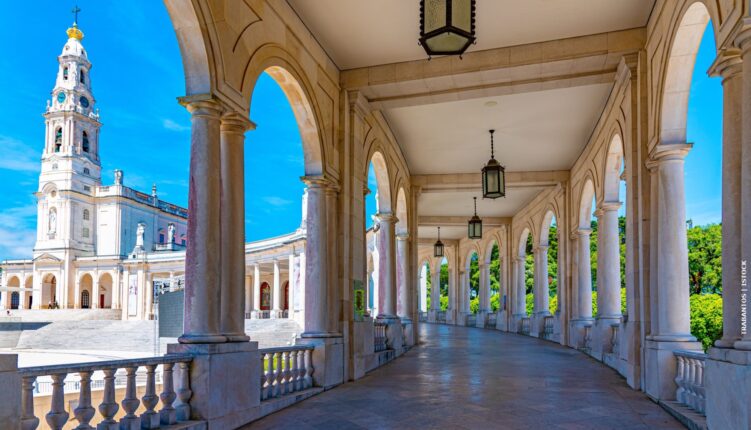Portuguese culture is not only influenced by its seafaring history but also by religion, with the majority of the population being Roman Catholic.
Fátima
The town of Fátima holds particular spiritual significance as the site of the famous Marian apparitions in 1917, where three shepherd children reported seeing Mary, the Mother of Jesus.
Today, Fátima draws millions of pilgrims seeking spiritual healing at the Sanctuary of Fatima.
Links to the sea
The nation’s affinity for the sea is obvious, both in its traditions and cuisine.
The latter is reflected by the amount of fish and seafood eaten in Portugal. The country has Europe’s highest fish consumption per capita and is among the top four in the world for this indicator. In 2017, the Portuguese ate 56.8kg of fish and seafood per capita – more than twice the EU average.
With influences from its former colonies and historic trading partners, the Portuguese people have brought home traditions and culinary delights from around the world.
During the Age of Discovery spices were brought back to Portugal. Including chillis – check out recipes for two easy dishes, including chicken piri-piri.
Cod, (bacalhau in Portuguese) is significant in Portugal’s culinary heritage, especially at Christmas. Learn more about why cod has become so important and why not try creating a dish or two? Click here for another two easy recipes, one of which uses cod.
With direct links to the sea, one of Algarve’s most photographed villages, Ferragudo, prospered with the fish-canning industry. The local factories had creches which allowed the women to work whilst the men were at sea or working in the ports.
Fado
Fado is considered to be the soul of Portuguese music. It is believed that similar music came from the Portuguese ex-colonies and today it continues to be sung, often on the spur of the moment, in restaurants and bars as is the custom.
Language
Portugal, although small in comparison to other European countries, is the sixth most widely spoken language in the world.
Portuguese is the third most-spoken of the European languages in the world and the second most-spoken Romance language in the world, Spanish being the first.
By the mid-16th century, Portuguese had emerged as a lingua franca in both Asia and Africa. It served not just as the language of colonial administration and trade but also as a means of communication between local officials and Europeans from various countries. The Portuguese influence extended from South America through Africa to the Pacific Ocean, taking their language along the way.
Drinks
Well-known Portuguese drinks include the tall glass of milky coffee known as a galão, medronho and port.
Of course, Portuguese wine is now well-known internationally with rosé wines, perhaps, being the first.
Click here to learn more about Algarve wines and here to find out about the region’s wine tourism.
The history of beer in Portugal can be traced back to the ancient Romans when beer was commonly made. The Portuguese word for beer is cerveja, which comes from the Latin word cerevisia.
In 2022, the most recent statistics available, Portugal is shown to continue to be a top producer and exporter of beer in Europe, ranking 6th.


One thought on “Portuguese culture, did you know…?”